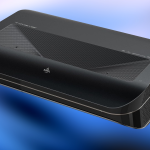
Switching audio streaming services is a pain.
Whether you’re saving on subscription fees or taking a stand against platform policies, changing from one music app to another almost always means losing part of your library.
Yes, you can manually rebuild your current collection on your new app of choice. But not every track is available on every service. You’ll rarely be able to achieve a 100 percent recreation. What’s worse, you can waste hours, even days, trying to make the impossible possible if you’ve curated a lot of content.
So save yourself the time, heartache, and sore thumbs by taking advantage of a “playlist transfer tool.” Here’s how to use the third-party apps, including both desktop and mobile options, that save your favorite music and (sometimes) podcasts before you delete Spotify, Apple Music, or whatever audio streaming service it is that you’re planning to pause.
What are playlist transfer tools?
You can make your transition between two streaming services easier by turning to a third party for help. Playlist transfer tools are usually free services that facilitate the transfer of audio collections between streaming services. Here’s how they generally work.
Most of the options start you out by having you select and sign into both the service you want to transfer your library “from” and the service you want to transfer your library “to.” You’re then prompted to select the specific playlists you want to transfer. The app may also make some suggestions of its own automatically.
These apps are usually free services that facilitate the transfer of audio collections between streaming services.
Users’ “liked” or “loved” collections are typically treated like playlists and can be transferred, meaning most of your library will be brought over that way. Playlists you follow — as opposed to the ones you’ve authored — can also be transferred; this may even include playlists curated by the service you’re leaving (think Spotify’s various “Moods” playlists or Apple Music’s trending selections). Though it’s worth noting that these transfers merely copy the playlist at the moment the copying happens; so if you’re transferring a playlist that is updated with any regularity, you’ll need to manually add new tracks moving forward — or just re-transfer the whole thing.
Podcast feeds are harder to copy, but if they’re put in playlist form they can sometimes be brought over. Depending on how many podcasts you follow, however, it may be easier to just find the show on the new app. Broadly speaking, playlist transfer tools work better with music.
Once your “to” and “from” are connected, the playlist transfer tool will cross-check all of the tracks against what’s available on the new service and recreate as much of each transferred playlist as possible. This process can take minutes or a few hours, depending on the transfer service you go with, your connection, and the size of your library.
How do you choose the right app to transfer your library?
There are a lot of audio streaming services, and seemingly just as many playlist transfer tools. Reviews indicate they mainly vary in terms of accuracy and speed. But some are also better for certain services, phones, and content types.
Your best best for finding the right fit for your collection will be researching options available to you via your phone’s app store. SongShift, FreeYourMusic, Playlisty, Soundiiz, and Tune My Music are among some of the most popular options. There are plenty to choose from and they largely do the same thing.
Most playlist transfer tools are free or offer an upgraded version for a minimal subscription fee. Keep yourself subscribed if you switch services a lot, but more likely than not you can make it a one-time thing.
Powered by WPeMatico






